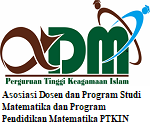Analysis of Main Components Status of Food Security at Village/Sub-District Level in Yogyakarta Special Region
DOI:
https://doi.org/10.15642/mantik.2020.6.1.30-37Keywords:
Principal component; Food security, Yogyakarta Special Region; VillageAbstract
Food is a basic aspect of the needs of human life to ensure the survival of individuals and communities. The realization of national food security starts from the fulfillment of food in the smallest region, namely the village /sub-districts. The objectives of the analysis using the principal component method are (1) to describe the main components of the status of food security at the village/sub-districts level; (2) to grouping villages/sub-districts based on food security status in the Yogyakarta Special Region. The data source of analysis comes from secondary data (Podes 2018). From the analysis produced several things, namely: (1) the main components of the status of food security at the village/sub-district level in the Yogyakarta Special Region there are five, namely affordability/access, food availability, environmental health, guaranteed access, and utilization of food; (2) village/sub-districts typology based on the status of food security in the Yogyakarta Special Region, namely 4: (a) food insecurity covering 55 villages/sub-districts (b) less resistant to 169 villages/sub-districts; (c) typologies 3 are vulnerable to cover 170 villages/sub-districts; (d) food-resistant typology covering 44 villages/sub-districts.
Downloads
References
P. Conceição, S. Levine, M. Lipton, and A. Warren-Rodríguez, “Toward a food secure future: Ensuring food security for sustainable human development in Sub-Saharan Africa,” Food Policy, vol. 60, pp. 1–9, 2016, doi: 10.1016/j.foodpol.2016.02.003.
B. Häsler et al., “Using participatory rural appraisal to investigate food production, nutrition and safety in the Tanzanian dairy value chain,” Glob. Food Sec., vol. 20, no. September 2018, pp. 122–131, 2019, doi: 10.1016/j.gfs.2019.01.006.
Trussell Trust, “The State of Hunger: Introduction to a Study of Poverty and Food Insecurity in the UK,” no. November, pp. 1–32, 2019.
A. Ickowitz, B. Powell, D. Rowland, A. Jones, and T. Sunderland, “Agricultural intensification, dietary diversity, and markets in the global food security narrative,” Glob. Food Sec., vol. 20, no. November 2018, pp. 9–16, 2019, doi: 10.1016/j.gfs.2018.11.002.
P. V Preckel and T. W. Hertel, “Poverty Analysis Using an International Cross-Country Demand System,” 2007.
FAO, IFAD, UNICEF, WFP, and WHO, Food Security and Nutrition in the World the State of Building Climate Resilience for Food Security and Nutrition. 2018.
BPS D.I. Yogyakarta, “Daerah Istimewa Yogyakarta Dalam Angka 2018,” p. 464, 2018.
K. Nainggolan,”Program akselerasi pemantapan ketahanan pangan berbasis pedesaan. 2006, [Online]. Available: http://pse.litbang_deptan.go.id/pdffiles/pros_kaman_06.pdf.
A. Suryana, “Menuju Ketahanan Pangan Indonesia Berkelanjutan 2025: Tantangan dan Penanganannya,” Forum Penelit. Agro Ekon., vol. 32, no. 2, p. 123, 2014, doi: 10.21082/fae.v32n2.2014.123-135.
K. Thome, M. D. Smith, K. Daugherty, N. Rada, C. Christensen, and B. Meade, “International Food Security, 2019-2029,” no. GFA-30, p. 65, 2019, [Online]. Available: www.ers.usda.gov.
C. Béné et al., “Understanding food systems drivers: A critical review of the literature,” Glob. Food Sec., vol. 23, no. April, pp. 149–159, 2019, doi: 10.1016/j.gfs.2019.04.009.
A. Shrestha, R. P. Koju, S. A. A. Beresford, K. C. G. Chan, B. M. Karmacharya, and A. L. Fitzpatrick, “Food patterns measured by principal component analysis and obesity in the Nepalese adult,” Heart Asia, vol. 8, no. 1, pp. 46–53, 2016, doi: 10.1136/heartasia-2015-010666.
M. Šnirc, M. Kral, M. Ošťádalová, J. Golian, and B. Tremlová, “Application of principal component analysis method for characterization chemical, technological, and textural parameters of farmed and pastured red deer,” Int. J. Food Prop., vol. 20, no. 4, pp. 754–761, 2017, doi: 10.1080/10942912.2016.1180532.
M. G. Thorpe, C. M. Milte, D. Crawford, and S. A. McNaughton, “A comparison of the dietary patterns derived by principal component analysis and cluster analysis in older Australians,” Int. J. Behav. Nutr. Phys. Act., vol. 13, no. 1, pp. 1–14, 2016, doi: 10.1186/s12966-016-0353-2.
A. Davies, “Food security initiatives in Nigeria: prospects and challenges.,” J. Sustain. Dev. Africa, vol. 11, no. 1, pp. 186–202, 2009, [Online]. Available: http://www.cabdirect.org/abstracts/20103307624.html.
S. C. Omar, “Ensuring food security during the Covid-19 pandemic,” no. April, 2020.
OECD, “Agriculture: Achieving greater food security,” March, 2015.
D. M. Tendall et al., “Food system resilience: Defining the concept,” Glob. Food Sec., vol. 6, pp. 17–23, 2015, doi: 10.1016/j.gfs.2015.08.001.
W. A. and M. H. Amjad A.H., Maqbool H.S., “Assessing Food Insecurity Trends and Determinants by using Mix Methods in Pakistan: Evidence from Household Pooled Data (2005- 2014),” Sarhad J. Agric., vol. 35, no. I, pp. 87–101, 2019, doi: http://dx.doi.org/10.17582/journal.sja/2019/35.1.87.101.
W. Härdle and L. Simar, “Applied Multivariate Statistical Analysis,” Appl. Multivar. Stat. Anal., no. April, 2003, doi: 10.1007/978-3-662-05802-2.
Downloads
Published
How to Cite
Issue
Section
License
- Authors retain copyright and grant the journal right of first publication with the work simultaneously licensed under a Creative Commons License that allows others to share the work with an acknowledgment of the work's authorship and initial publication in this journal.
- Authors are able to enter into separate, additional contractual arrangements for the non-exclusive distribution of the journal's published version of the work (e.g., post it to an institutional repository or publish it in a book), with an acknowledgment of its initial publication in this journal.
- Authors are permitted and encouraged to post their work online (e.g., in institutional repositories or on their website) prior to and during the submission process, as it can lead to productive exchanges, as well as earlier and greater citation of published work







.png)




